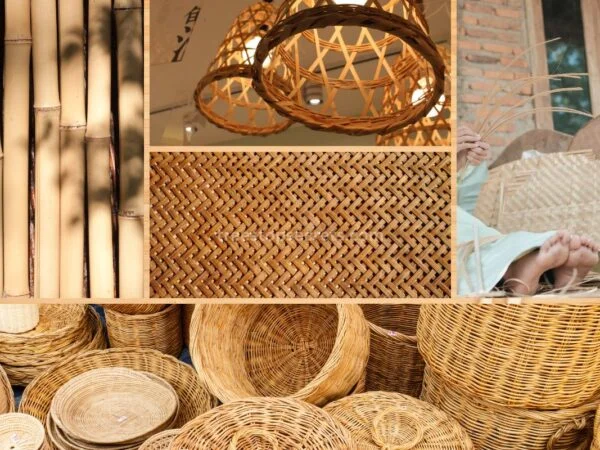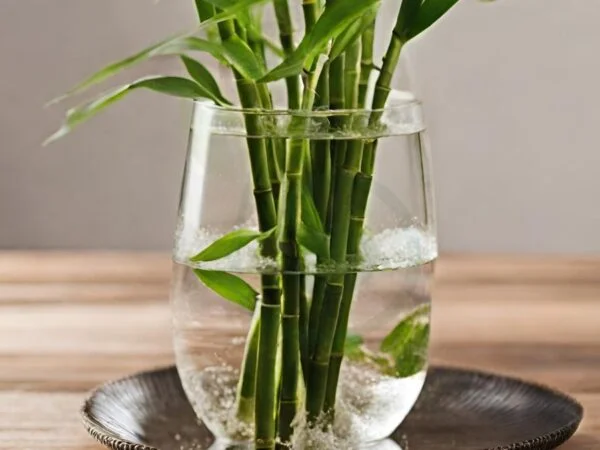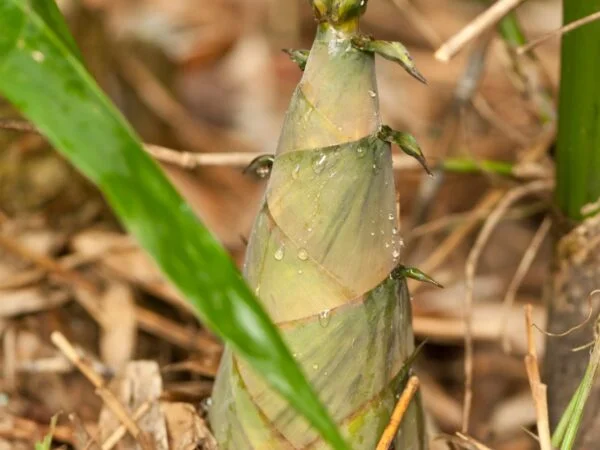Are you ready to give your bamboo a fresh start? Repotting bamboo can breathe new life into your green oasis. Whether you want to enhance its growth or simply rearrange its sections, replanting offers numerous benefits. From improving root health and promoting stronger shoots to preventing overcrowding, this process ensures your bamboo thrives for years to come. But why should you bother with proper technique?
Well, it's the key to success! The way you repot bamboo can make all the difference in its survival and growth rate. So, let's dive into an overview of the steps involved in this rejuvenating journey. Grab your gardening gloves and get ready to unleash the potential of your beloved bamboo!
Replanting bamboo involves strategic planning and execution. We'll explore everything from choosing the right potting mix to ensuring each section finds its perfect spot in the soil. Stay tuned for expert tips and tricks that will transform your garden into a vibrant sanctuary of lush greenery!
Choosing the Right Potting Mix
Choosing the right potting mix is crucial for ensuring healthy growth and longevity of your plant. The type of potting mix you select will greatly impact the overall health and vitality of your bamboo. Here are some factors to consider when selecting a potting mix for your bamboo:
Factors to consider when selecting a potting mix for bamboo
- Drainage: Bamboo plants thrive in well-draining soil that allows excess water to flow away from the roots. It is important to choose a potting mix that provides excellent drainage, preventing waterlogging which can lead to root rot.
- Moisture Retention: While good drainage is essential, it's equally important for the potting mix to retain enough moisture for the bamboo plant's roots. Balancing moisture retention with proper drainage will help maintain an optimal environment for healthy growth.
- Nutrient Content: Bamboo plants require certain nutrients to thrive. When selecting a potting mix, ensure it contains a balanced blend of organic matter and nutrients such as nitrogen, phosphorus, and potassium (NPK). This will provide your bamboo with the necessary elements for robust growth.
Different types of potting mixes suitable for bamboo
- Commercial Potting Mixes: There are various commercially available potting mixes specifically formulated for different plant types, including bamboos. These mixes usually contain a combination of peat moss, vermiculite or perlite, and composted materials that provide good drainage while retaining moisture.
- DIY Custom Mixes: Creating a custom potting mix allows you to tailor it according to your specific requirements and preferences. Here's a simple recipe you can try:
- Combine equal parts of peat moss or coconut coir, perlite or vermiculite, and compost.
- Add small amounts of slow-release fertilizer or organic matter to enhance nutrient content.
- Mix the ingredients thoroughly, ensuring a well-blended potting mix.
Importance of well-draining soil for healthy bamboo growth
Proper drainage is crucial for bamboo plants as it prevents waterlogged soil, which can lead to root rot and other issues. The roots of bamboo are sensitive to excessive moisture, so providing a well-draining potting mix is essential. This ensures that water flows freely through the soil, preventing the roots from suffocating and promoting healthy growth.
Well-draining soil also helps prevent nutrient leaching. When water drains too quickly through the potting mix, essential nutrients can be washed away before the plant has a chance to absorb them. By using a well-draining potting mix, you ensure that nutrients remain available for your bamboo's uptake.
Tips for creating a custom potting mix for your bamboo plant
- Opt for a mixture of organic materials like peat moss or coconut coir and inorganic materials such as perlite or vermiculite. This combination provides both moisture retention and adequate drainage.
- Consider adding slow-release fertilizer or organic matter to enrich the nutrient content of your potting mix gradually.
- Regularly monitor the moisture levels in your pots and adjust watering accordingly. Bamboo prefers evenly moist soil but not soggy conditions.
- Choose a suitable pot size based on the variety of bamboo you have.
Step-by-Step Guide: Removing Bamboo from its Original Pot
Tools needed to safely remove bamboo from its original pot
To successfully replant a bamboo, you'll need a few essential tools. Firstly, grab a pair of gardening gloves to protect your hands from any prickly or sharp edges. Next, equip yourself with a sturdy trowel or hand shovel that can handle the task of loosening the soil around the plant. Keep a small bucket nearby for collecting any excess soil that may spill during the process. Finally, having a butter knife handy can be incredibly helpful.
Techniques for loosening and extracting the root ball without damaging the plant
Once you have gathered all your tools, it's time to tackle removing the bamboo from its original pot. Begin by carefully tipping the pot on its side while holding onto the base of the plant. Gently tap or squeeze the sides of the pot to loosen it, allowing gravity to assist in sliding out the root ball.
If you encounter resistance and find that the root ball is stuck inside due to compacted soil or tangled roots, don't panic! Take your trusty butter knife and run it along the inner edge of the pot between the soil and container wall. This will help loosen any stubborn roots clinging to the sides.
With some patience and finesse, gently wiggle and rotate the bamboo until it starts coming loose from its original pot. Be careful not to pull too forcefully as this could damage delicate roots or break stems.
Steps to follow when removing tangled or compacted roots from the pot
In cases where you encounter tangled or compacted roots within your bamboo's original pot, take these steps for safe removal:
- Carefully inspect and identify areas where roots are intertwined.
- Use your fingers or a small garden fork to tease apart any tightly wound sections.
- If necessary, use the butter knife to gently separate stubborn roots.
- Slowly and gradually remove the root ball, ensuring minimal damage to the plant.
Remember, bamboo plants are resilient, but their roots can be delicate. Take your time and exercise caution throughout this process.
Precautions to take during the removal process to avoid injury or damage
While replanting bamboo can be an exciting endeavor, it's crucial to prioritize safety and prevent any harm to yourself or the plant. Here are a few precautions to keep in mind:
- Wear protective gloves throughout the entire process to shield your hands from potential cuts or scratches.
- Be mindful of sharp edges on pots or tools that could cause injury.
- Avoid excessive force when loosening the root ball, as this may result in broken stems or damaged roots.
- If you encounter resistance while removing tangled roots, apply gentle pressure and use tools like a butter knife sparingly.
- Take breaks if needed, especially if you're dealing with a large or heavy pot.
By following these precautions, you'll ensure a successful transition for your bamboo from its original pot into its new home.
Replanting bamboo requires care and attention, but with the right tools and techniques, you'll have no trouble giving your beloved plant a fresh start. So grab those gloves, trowel, bucket, and butter knife – it's time to embark on this rewarding gardening adventure!
Preparing the New Container for Transplanting
Choosing an appropriate container size and material for transplanting bamboo is crucial to ensure its healthy growth in its new home. When repotting bamboo, it is important to select a container that provides enough space for the plant's root ball and allows room for new shoots to emerge.
When considering the size of the new pot, opt for one that is slightly larger than the current container. This will give the roots ample space to spread out and encourage healthy growth. Choose a material that is sturdy and durable, such as plastic or ceramic, to provide stability and support for the bamboo plant.
Before transferring your bamboo to its new home, it is essential to clean and sterilize the container. This ensures that any potential pests or diseases are eliminated, reducing the risk of harming your plant. To clean the new pot, wash it thoroughly with warm soapy water and rinse well. Then, sanitize it by wiping down all surfaces with a diluted bleach solution (1 part bleach to 9 parts water). Rinse again with clean water before proceeding.
Adequate drainage holes are vital when preparing a new container for transplanting bamboo. These holes allow excess water to escape from the soil, preventing root rot and other moisture-related issues. Ensure there are enough drainage holes in the bottom of the pot to facilitate proper water flow.
Once you have chosen an appropriate pot size, cleaned and sterilized it, and ensured proper drainage holes are in place, carefully transfer your bamboo into its new home. Gently remove the plant from its current container by loosening the soil around its roots using your fingers or a small gardening tool.
Place the root ball of your bamboo into the center of the new pot while making sure it sits at a similar depth as before. Fill in any remaining space around the root ball with fresh potting medium specifically designed for plants like bamboo. Press down lightly on the soil to secure the plant in place.
When selecting a location for your newly transplanted bamboo, consider its sunlight and water requirements. Bamboo generally thrives in full sun or partial shade, so choose a spot that provides these conditions. Ensure that the location allows for easy access to watering as bamboo plants require regular watering to stay hydrated.
Techniques for Transplanting Bamboo
Transplanting bamboo can be a delicate process that requires careful consideration and proper techniques. Whether you're moving your bamboo to a new location or replanting it in a container, following these guidelines will help ensure a successful transplant.
Proper timing and seasonality considerations when transplanting bamboo
Timing is crucial. It's best to undertake this task during the dormant season, which typically occurs in late fall or early winter. During this period, the plant is less active, making it more resilient to the stress of transplantation.
Before starting the process, make sure to prepare the new planting site by clearing any weeds or debris. This will provide a clean environment for your bamboo to thrive in its new home. Consider the weather conditions; avoid transplanting during extreme temperatures or when heavy rainfall is expected.
Methods for handling and positioning large or heavy clumps of bamboo during transplantation
When dealing with large clumps of bamboo, it's essential to approach the task with caution. Here are some methods to handle and position them effectively:
- Use sturdy garden gloves: Bamboo can have sharp edges and splinters, so wearing protective gloves will help prevent injuries while handling.
- Divide into manageable sections: If your bamboo clump is too large or heavy to handle as a whole, divide it into smaller sections using pruning shears or a saw. Make sure each section has enough roots attached for successful transplantation.
- Utilize leverage: To move larger sections of bamboo, use leverage by placing long poles under the clump and gently lifting it onto a tarp or wheelbarrow for transport.
Strategies for ensuring proper depth and alignment when placing the root ball into the new container
When replanting bamboo in containers, achieving proper depth and alignment is crucial for its growth and stability. Follow these strategies:
- Choose an appropriate-sized container: Select a container that allows ample space for the bamboo's root system to expand. Ensure it has drainage holes to prevent waterlogging.
- Position the root ball correctly: Place the bamboo's root ball in the center of the container, making sure it sits at the same depth as it was in its previous location.
- Align with natural growth direction: Orient the bamboo in the container according to its natural growth pattern. This will help maintain its balance and prevent unnecessary stress on the plant.
Tips on backfilling with soil around the root ball to provide stability
Backfilling is an essential step in transplanting bamboo as it provides stability and support for healthy growth. Consider these tips when backfilling:
- Use a well-draining soil mix: Prepare a mixture of good-quality potting soil and compost, ensuring proper drainage while retaining moisture.
- Fill around the root ball gradually: Gently fill soil around the root ball, pressing lightly to eliminate air pockets. Add soil incrementally until reaching ground level or slightly below.
- Water thoroughly after backfilling: Once you've completed backfilling, water your newly transplanted bamboo generously to settle the soil and hydrate its roots effectively.
By following these techniques for transplanting bamboo, you can ensure your plant's successful relocation or replantation while minimizing stress and promoting healthy growth.
Caring for Newly Repotted Bamboo: Maintenance Guidelines
Watering instructions after repotting bamboos
After successfully replanting your bamboo, it is crucial to provide the right amount of water to ensure its healthy growth. While bamboos are generally resilient plants, they require consistent moisture to thrive. Immediately after repotting, give your newly transplanted bamboo a thorough watering. This will help settle the soil and eliminate any air pockets that may have formed during the process.
In the initial weeks following repotting, monitor the moisture levels in the soil regularly. Aim to keep the soil consistently moist but not overly saturated. Overwatering can lead to root rot and other issues, so be cautious not to drown your bamboo by providing excessive water. On the other hand, allowing the soil to dry out completely can cause stress and hinder growth.
To determine when it's time for watering, insert your finger about an inch into the soil near the base of your bamboo plant. If it feels dry at this depth, it's time to water again. Pay attention to external factors such as temperature and humidity levels, as they can influence how quickly moisture evaporates from the soil.
Recommendations on fertilizing newly repotted bamboos
While freshly replanted bamboos benefit from nutrient-rich soil during transplantation, additional fertilization is necessary for their continued health and vigor. However, it's important not to overwhelm your bamboo with excessive amounts of fertilizer immediately after repotting.
Wait until your bamboo has settled into its new pot before introducing fertilizer. Typically, this is around four weeks after replanting. Choose a balanced slow-release fertilizer specifically formulated for bamboo plants or opt for organic alternatives like compost or well-rotted manure.
During the growing season (spring through summer), apply fertilizer every four to six weeks according to package instructions or as recommended by a gardening expert. Be mindful not to over-fertilize, as this can lead to burned roots and other complications. Always water your bamboo thoroughly before applying fertilizer and avoid direct contact between the fertilizer and the plant's foliage.
Monitoring signs of stress or shock in newly transplanted bamboos
After repotting, it is normal for bamboos to experience a period of adjustment known as transplant shock. During this time, closely monitor your plant for any signs of stress or distress. Common indicators include yellowing leaves, wilting, stunted growth, or increased susceptibility to pests and diseases.
To mitigate transplant shock, ensure your bamboo receives adequate sunlight but avoid placing it in direct sunlight immediately after replanting. Gradually introduce more sunlight over a few days until it reaches its preferred light conditions. Shield your bamboo from strong winds during this vulnerable period.
Regularly inspect the leaves for any signs of pests or diseases. If you notice any abnormalities, promptly address them using appropriate organic pest control methods or consult with a professional gardener if necessary.
Pruning guidelines specific to recently repotted bamboos
Pruning plays an essential role in maintaining the health and aesthetics of your bamboo plants. However, it is advisable to delay pruning until your newly repotted bamboo has had sufficient time to acclimate to its new environment.
Wait at least six months after replanting before undertaking any significant pruning tasks.
Mulching for Success: Types and Application
Mulching is an essential practice. It offers numerous benefits that contribute to the overall success of your bamboo plants.
Benefits of mulching around bamboo plants
Mulching provides a range of advantages that promote healthy growth and development in bamboo. Here are some key benefits:
- Moisture retention: Mulch acts as a protective layer, reducing moisture evaporation from the soil. This helps maintain optimal hydration levels for your bamboo plants, especially during dry spells.
- Weed suppression: By creating a barrier between the soil and sunlight, mulch inhibits weed growth. This eliminates competition for nutrients and ensures your bamboo receives all the nourishment it needs.
- Temperature regulation: Mulch acts as an insulator, protecting roots from extreme temperature fluctuations. It keeps the soil cooler during hot summers and prevents frost damage in colder climates.
- Soil improvement: As organic mulch breaks down over time, it enriches the soil with essential nutrients, improving its fertility and structure. This enhances overall plant health and vigor.
Different types of mulch suitable for bamboo
Choosing the right type of mulch is crucial to ensure optimal growth conditions for your bamboo plants. Consider these options:
- Gravel or pebbles: Ideal for areas with poor drainage, gravel allows water to flow freely while preventing waterlogging around the roots.
- Wood chips or bark: These natural materials provide excellent insulation properties while gradually decomposing to enrich the soil.
- Straw or hay: Suitable for colder regions where additional winter protection is necessary.
- Compost or leaf mold: Rich in nutrients, compost serves as both a fertilizer and mulch, promoting healthy growth.
- Clumps of bamboo leaves: Fallen leaves from your own bamboo plants can be used as mulch, recycling organic matter within the same ecosystem.
Proper application techniques to maximize the benefits of mulching
To ensure the effectiveness of mulching, it is essential to follow proper application techniques. Consider the following guidelines:
- Prepare the area: Clear any weeds or debris from around the base of your bamboo plant before applying mulch.
- Choose the right thickness: Apply a layer of mulch approximately 2-4 inches thick. This provides adequate coverage without suffocating the roots.
- Extend coverage area: Extend the mulch layer beyond the immediate base of your bamboo plant to cover a wider surface area. This helps suppress weed growth and maintains moisture levels in a larger zone.
- Avoid direct contact with stems: Ensure that mulch does not come into direct contact with the stems or culms of your bamboo plants, as this can lead to rotting or pest infestations.
By following these simple yet effective techniques, you can maximize the benefits of mulching and create an optimal environment for your replanted bamboo to thrive.
Conclusion
Congratulations! You are now equipped with the knowledge and skills to master the art of replanting bamboo. By following the steps outlined in this guide, you can ensure a successful transition for your bamboo plant into its new home.
Choosing the right potting mix is crucial in providing your bamboo with a healthy growing environment. Remember to opt for a mix that is well-draining and rich in organic matter.
The step-by-step guide provided detailed instructions on how to remove your bamboo from its original pot without causing any damage. Be gentle and take your time to ensure the roots remain intact during this process.
Preparing the new container for transplanting is essential to create an optimal environment for your bamboo. Ensure that it has proper drainage holes and is appropriately sized for the plant's root system.
There are various methods you can employ depending on the size and type of bamboo. Choose the technique that suits your specific needs, whether it be clump division or rhizome cutting.
Caring for newly repotted bamboo requires attention and maintenance. Water regularly, but avoid overwatering, as it can lead to root rot. Provide adequate sunlight and keep an eye out for any signs of pests or diseases.
Mulching plays a vital role in ensuring success when replanting bamboo. Use organic mulch such as wood chips or straw to retain moisture, suppress weeds, and regulate soil temperature.
To further enhance your understanding of replanting bamboo, we recommend exploring additional resources such as case studies, expert advice, or joining online communities where you can share experiences with fellow enthusiasts.
Remember that practice makes perfect. Don't be discouraged if you encounter challenges along the way; instead, use them as opportunities to learn and improve your replanting techniques.
Now go forth and confidently embark on your journey of replanting bamboo! Enjoy watching your plants thrive and create a beautiful green oasis in your home or garden.
FAQs: How to Replant Bamboo?
How often should I water newly replanted bamboo?
It is important to keep the soil consistently moist, but avoid overwatering. Water your bamboo plant every 2-3 days, adjusting the frequency based on environmental factors such as temperature and humidity.
Can I replant bamboo during any season?
Ideally, it is best to replant bamboo during the spring or fall when temperatures are mild. This allows the plant to establish its roots before facing extreme weather conditions.
How long does it take for transplanted bamboo to establish?
Transplanted bamboo typically takes around 6-12 months to fully establish itself in its new container or location. During this time, provide proper care and monitor its growth progress.
Should I fertilize my newly repotted bamboo?
Yes, you can consider fertilizing your newly repotted bamboo with a balanced slow-release fertilizer. Follow the manufacturer's instructions and avoid overfertilization, as it can harm the plant.
Can I divide a large clump of bamboo into smaller plants?
Yes, dividing a large clump of bamboo into smaller plants is possible and commonly done during replanting. Ensure that each divided section has an adequate amount of roots for successful transplantation.
Remember that these FAQs are just a starting point, and there may be additional questions specific to your situation. Feel free to seek further information from reputable sources or consult with experts in the field for personalized guidance.
Image Source: Paid image from CANVA




